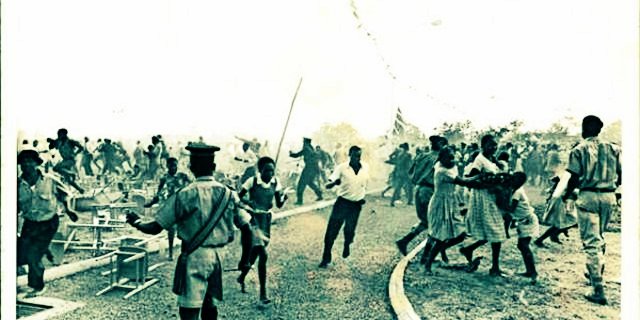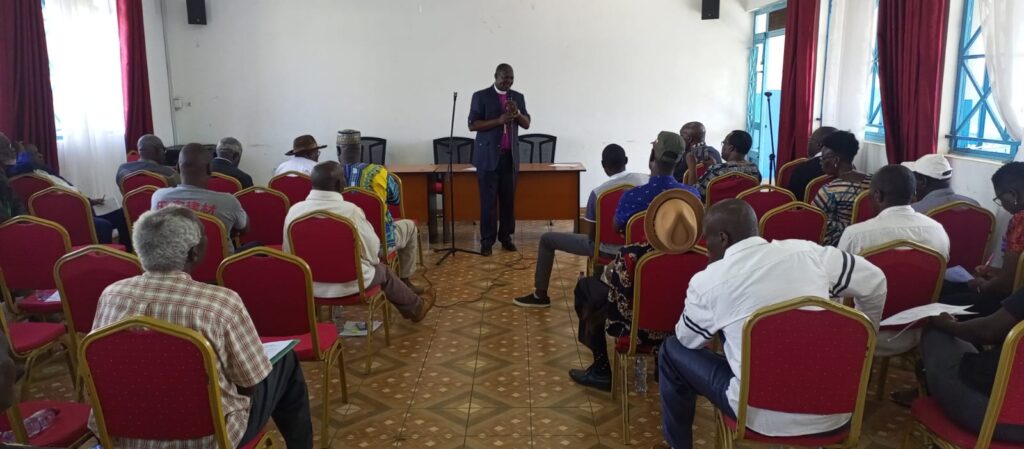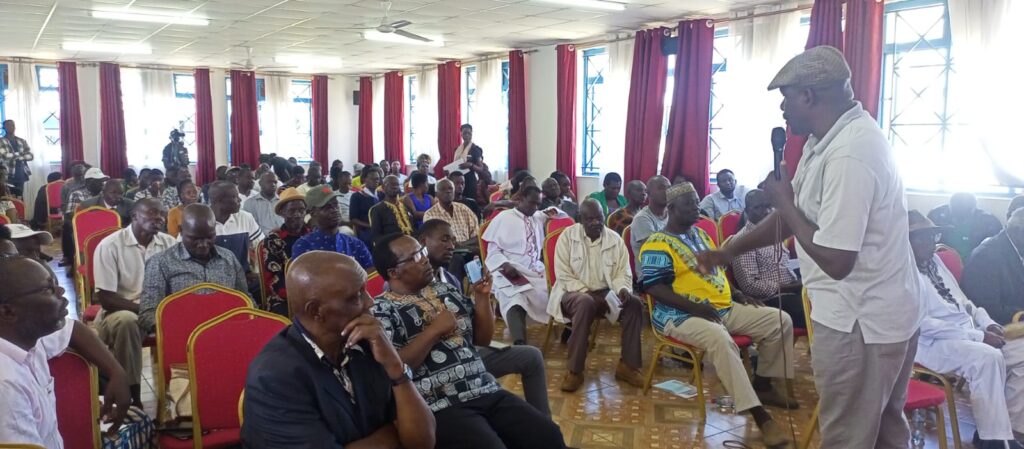October 25, 1969, remains a key political turning point for Kisumu.
On this day, founding President Mzee Jomo Kenyatta visited the lakeside town for the inauguration of Russia Hospital (now Jaramogi Oginga Odinga Teaching and Referral Hospital).
Mzee Kenyatta’s political difference with his founding Vice President Jaramogi Oginga Odinga played out during the event, degenerating into a nasty verbal exchange between Mzee Kenyatta and Jaramogi.
This quickly spiraled into riots and chaotic scenes.
The Presidential security and the police were reported to have opened fire from Russia Hospital grounds as they cleared the road and sped off through Kakamega Road, Nairobi Road, to Awasi, the then border of Kisumu and Kericho Districts.
Even though official government records indicated that about 11 people were shot dead in the melee, other reports claim that over 100 lives were lost, with several others injured.

Onyango Radier
At the heart of the melee was Onyango Radier, a gallant Oginga aid in his 20s.
Radier is now 83 years old, and has retired back to his Rarieda home in Siaya County, but the memories of the day remain clear in his mind.
On October 27, 2023, Radier was among the first-hand witnesses of the massacre who attended the first-ever commemoration of the incident held in Kisumu.
Remember, Jaramogi was key in the negotiations for the Russia funding of the hospital, so he felt this was his baby and he would not miss its inauguration because he had political differences with Kenyatta
Onyango Radier
Local residents through Nyanza Dialogue Initiative held the commemoration at Mama Grace Onyango Cultural Centre where various stakeholders converged to reconstruct the incident which has since been documented in history books as ‘1969 Kisumu Massacre’.
Led by Historian and Journalist Oloo Janak, the commemoration revisited the incident, with the aim of reconstructing the narrative behind the killings which they noted to have been distorted over time.
According to Radier, even though Jaramogi and Kenyatta had parted ways politically and had not shared a political podium for some time, Jaramogi felt it was a courtesy to join Kenyatta at the Kisumu event as this was his home ground.
“Remember, Jaramogi was key in the negotiations for the Russia funding of the hospital, so he felt this was his baby and he would not miss its inauguration because he had political differences with Kenyatta,” said Radier.
But as the event went on, a few people dressed in Jaramogi’s Kenya People Union (KPU) Party branded t-shirts began to heckle the President.
“Tension built quickly, and the Presidential security too charge of the podium,” said Radier.

Kenyatta-Jaramogi altercation
And when Mzee Kenyata stood up to speak, he blamed Jaramogi for being behind the heckling, asking him to ‘contain his hungry people’.
But in response, Jaramogi was reported to have told Mzee Kenyatta in his face that he was the president of the whole country and that if there were any hungry Kenyans then it was his duty to feed them.
The short altercation quickly turned ugly, with the Presidential security evacuating Mzee Kenyatta amid sounds of gunshots and flying objects.
Radier and other Jaramogi aids evacuated him into one of the rooms in the hospital which had just been inaugurated.
When calm returned, bodies of men, women and children were lying lifeless, some injured along Kakamega road and over 30 kilometres along Nairobi road.
I was at the centre of Jaramogi’s political strategies, and had there been plans for heckling the president, I could have been privy to such plans
Onyango Radier
But Radier now claims that the then government was responsible for Mzee Kenyatta’s heckling, with the sole aim of painting Jaramogi as violent so as to ban KPU ahead of the polls.
“I was at the centre of Jaramogi’s political strategies, and had there been plans for heckling the president, I could have been privy to such plans,” he said.
Radier was among the dignitaries who accompanied Jaramogi from his home in Kisumu’s Milimani Estate to the venue of the event.
He was a Councillor, and the Chair of Public Health at the Council, putting him at a vantage point at the event.
“Jaramogi was accompanied by his children, including Raila (Odinga) and Adhiambo (Ruth, now Kisumu County Woman Representative) who was still very young. How could he have allowed his young children into such an event when he had planned violence?” he posed.
‘System’ planned the Kisumu chaos
His sentiments were echoed by Adhiambo Lomo who was also present at Jaramogi’s entourage to Russia Hospital.
As opposed to Radier, Lomo, now 84 years old, did not reach the venue.
“On our way, I asked my colleagues to drop me in town,” he said. He was then a government employee.
While still at the main bus stage, he heard live proceedings of the Russia Hospital event which had begun turning chaotic.
Before long, loud gunshot sounds rented the air as the President’s convoy snaked its way out into Nairobi Road. A bowl thrown from the convoy missed his head by a whisker.
On his way back to his Masogo home in Kano, he met dead bodies and people writhing in pain from gunshot wounds.
“To dismiss any claims that Jaramogi planned the chaos, ask yourself why none of those who had KPU-branded shirts and heckled the president was shot. That tells you these were system’s people,” said Lomo.

According to Janak, the commemoration which is set to be held annually will focus on reconstructing the history of struggle by Nyanza people, and using it for learning.
“A lot of our history has been distorted because we do not document our moments,” he said.
He noted that the October 25, 1969 incident marked a turning point in Kisumu’s political landscape, and the city has remained politically active.
He said the city has remained crucial in determining the country’s political discourse and has participated in critical political reforms in the country, including the fight for multipartyism, the birth of the 2010 Constitution, and electoral reforms, among other governance issues in the country.
“These are moments which need to be documented and kept for reference so that people get to know where we are coming from and why we respond to certain situations the way we do,” he said.
